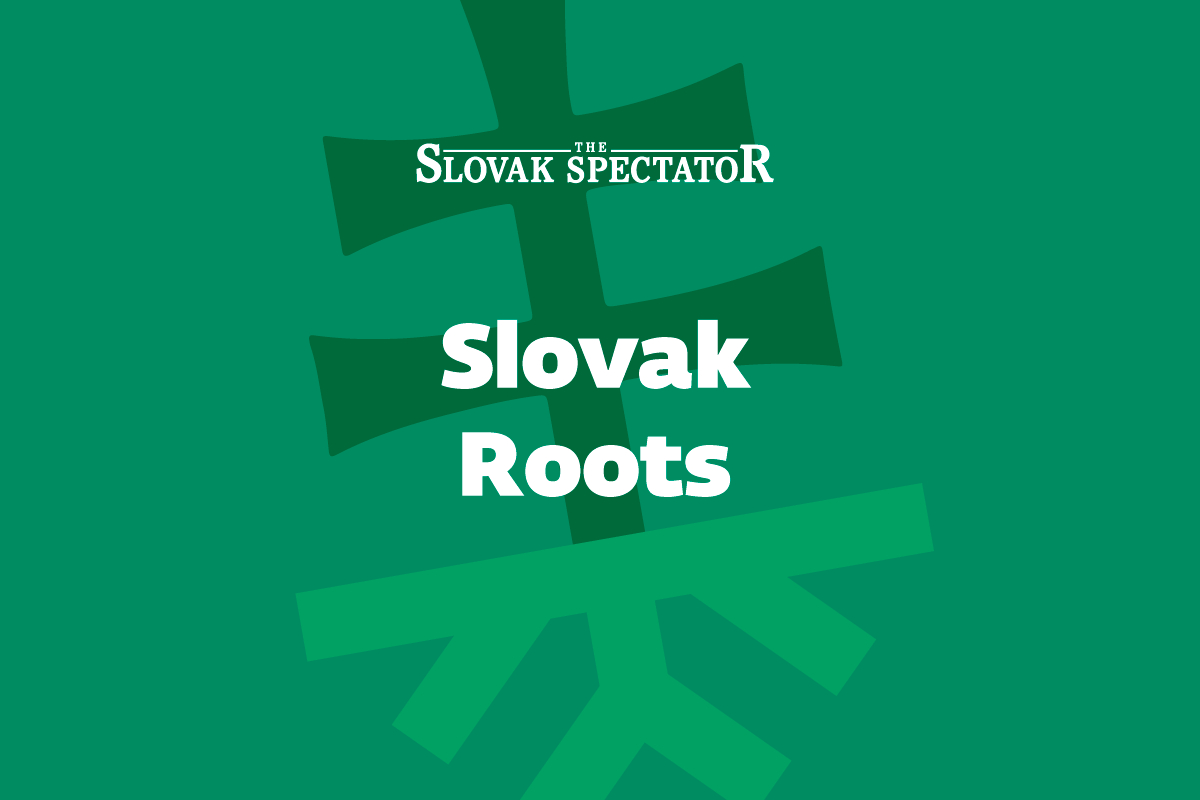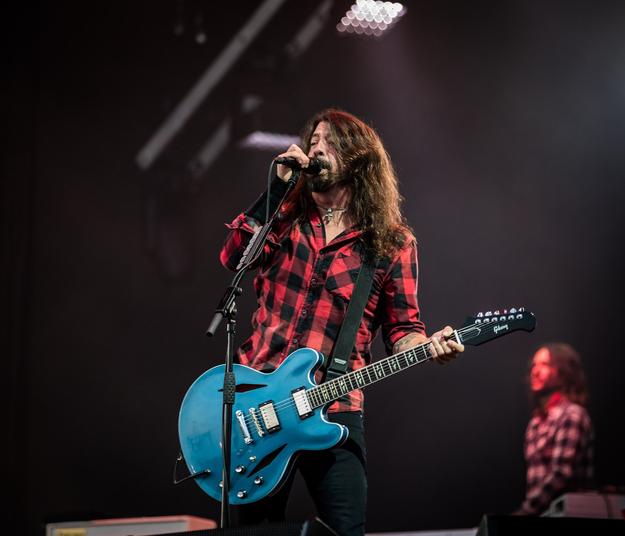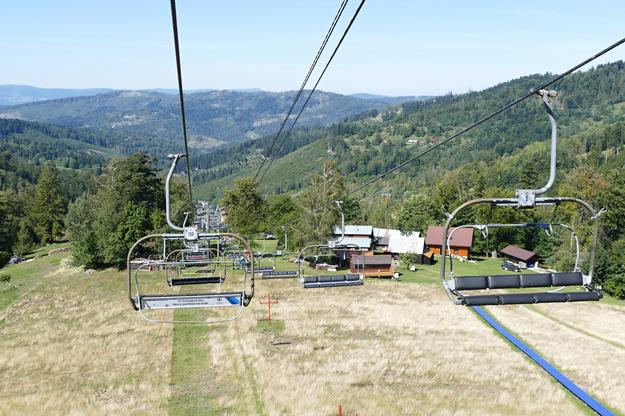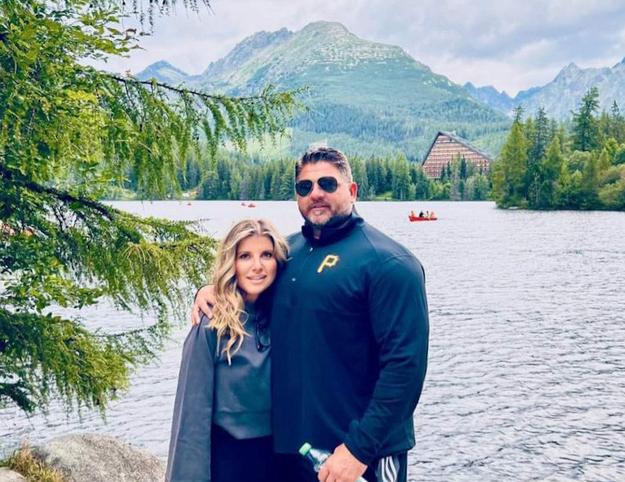Welcome back Slovak Roots fans!
It is time for another edition of our Slovak Roots newsletter, dedicated to the community of people with ties to Slovakia.
In this newest instalment, we have got a lot of stories to share with you. You will learn about former Nirvana drummer Dave Grohl's tangled Slovak roots, how a Slovak family built a new home in the Canadian wilderness, as well as the first and until recently unknown Slovak goalkeeper to get an NHL contract.
You can also look forward to meeting James Punday II, an American who wants to retire in Slovakia and build a gym that would bring some Venice Beach vibes to the capital.
And finally, for adventurous souls we have got some tips to visit Kysuce in northern Slovakia. What the region lacks in castles, it makes up for in hidden monuments.
Dave Grohl's tangled Slovak roots
American singer Jon Bon Jovi is among the rare few public figures known worldwide that that wear their Slovak roots proudly on their sleeves. One could argue that American musician Dave Grohl, the former drummer of the grunge band Nirvana and now the frontman of Foo Fighters, belongs to the other group.
Actually, when he recollected his ancestry in his autobiographical memoir The Storyteller, there is no mention of his Slovak origin. Other biographies of him don't mention it either.
The Czechoslovak Genealogical Society from Minnesota was able to track his ancestors down and show that his ancestry on his father's side goes back to northeastern Slovakia.
How to best experience Kysuce
Kysuce, a rugged and hilly region in Slovakia's northwest, is known for its treacherous driving conditions. With no motorway cutting through the landscape, traffic often crawls along the main route to Poland, a vital corridor yet one sorely lacking in infrastructure. But to truly experience Kysuce, one must step away from the congestion and embrace the slower, winding roads that weave through valleys and past remote settlements, as our colleague Jozef Ryník did.
During his recent visit, he learned that what was once a magnet for Poles lost its attraction after Slovakia adopted the euro in 2009. Moreover, over the past decade, Poland has successfully developed its own ski lifts just across the border. The region is now looking for ways how to lure Poles back.
Kysuce is a great place to visit in its own right. As Jozef Ryník writes, visitors seeking natural beauty will undoubtedly find it in abundance; however, they can also uncover architecturally and historically significant sites and buildings. Find out more here.
Through hell and back: the story of a family
Thousands upon thousands of people, including Slovaks, flocked to America at the turn of the 19th and 20th centuries in search of a better life, of the American dream. Among the immigrants were the ancestors of now fourth generation American Slovak James Punday II who left the town of Bardejov in eastern Slovakia. Their lives, as well as that of their children, were very difficult.
"It had to go through coal mines, steel mills, police. I'm the first white collar with an MBA and a doctorate candidate. It took that many generations of going through hell to get to living the American dream more," he told The Slovak Spectator, recollecting his family history.
Punday is now 50 and is planning his retirement in Slovakia. Learn more about his story here.
A selection of feature stories published by The Slovak Spectator that we recommend reading:
Canada became a popular destination when the US introduced an immigration quota system in the aftermath of WWI. Meanwhile, the so-called Railways Agreement of 1925 opened Canada up to immigration. The country began recruiting agricultural and industrial laborers from 'non-preferred' European countries, including Czechoslovakia.
In early 2000s, goalkeepers Ján Lašák and Rastislav Staňa were pioneers who got to experience what the most famous hockey league. But actually neither was the first. They were preceded almost 20 years by a guy known only to hockey connoisseurs.
It is often said - without evidence - that Slovak is one of the hardest languages in the world. Associate Professor Michaela Mošaťová, director of Studia Academica Slovaca, says it is a myth. In an interview, she talks about why, what Slovak courses are available to foreigners, the challenges facing people learning the language, and more.
If you walk past the Bratislava downtown skyscraper jungle and find a disused scrapyard near the city's Danubian port, you will find groups of people, aged anywhere from 18 to 60, drinking beer and dancing to hardcore punk music, thrash metal, techno or hip-hop. Two rows of roughly 50 storage units that have stood since the 1980s have formed a legendary venue called Koncerty na Garážach that provides a space for Bratislava's underground music scene to thrive.
An international team of multidisciplinary scientists led by a Slovak scientist has shed light on an ancient climate enigma. Their study employed a novel approach pioneered by Hana Jurikova from the University of St Andrews in Scotland.
Immunity boost, pain reduction, relaxation and unwinding are among the benefits of saunas, which a popular part of wellness resorts around the world, including Slovakia. Find out which resort offers the largest sauna park in the country and where is the largest sauna ceremony located in this ranking.
Would you like to share your story with us? Did you enjoy the newsletter? I would love to hear your thoughts, questions and feedback: matus.beno@spectator.sk or spectator@spectator.sk.



 (source: Hej, Ty!)
(source: Hej, Ty!)
 Foo Fighters frontman Dave Grohl. (source: WIKIMEDIA / CC)
Foo Fighters frontman Dave Grohl. (source: WIKIMEDIA / CC)
 A chairlift at the Veľká Rača hill in Kysuce. (source: TASR)
A chairlift at the Veľká Rača hill in Kysuce. (source: TASR)
 James Punday II and his wife at the Štrbské Pleso mountain lake in the High Tatras. (source: Archive of J. P. )
James Punday II and his wife at the Štrbské Pleso mountain lake in the High Tatras. (source: Archive of J. P. )